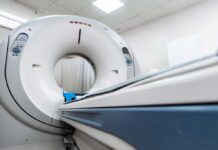
Scientists have discovered viral protein fragments lurking in the blood of long COVID patients.
Story Highlights
- Researchers identified 65 distinct SARS-CoV-2 protein fragments in blood samples from long COVID patients
- Discovery offers first potential biomarker for objective diagnosis, moving beyond symptom-based guesswork
- Fragments found in extracellular vesicles were absent in pre-pandemic control samples
- Breakthrough could validate millions of Americans dismissed by healthcare systems
Breakthrough Discovery Validates Patient Experiences
Researchers from the Translational Genomics Research Institute, City of Hope, and the Lundquist Institute published groundbreaking findings in August 2025 identifying measurable viral remnants in long COVID patients’ blood. The team detected 65 distinct protein fragments from SARS-CoV-2’s Pp1ab protein within extracellular vesicles, microscopic packages that cells release into circulation. This discovery represents the first quantifiable biomarker for a condition affecting millions of Americans who have been dismissed by medical professionals lacking objective diagnostic tools.
Scientists have uncovered viral protein fragments lingering in the blood of long COVID patients, offering the first potential biomarker for this mysterious condition. Researchers from the Translational Genomics Research Institute and the Lundquist Institute found fragments of the… pic.twitter.com/76ukAr236q
— James Tate (@JamesTate121) August 25, 2025
Dr. William Stringer, the study’s senior author, acknowledged the diagnostic void plaguing long COVID patients, stating he previously had “no blood tests or biomarkers to confirm this diagnosis.” The research team analyzed blood samples from patients participating in aerobic exercise training trials, using mass spectrometry to identify viral protein fragments that were completely absent in pre-pandemic control samples.
Scientific Method Exposes Viral Persistence
The research methodology employed rigorous scientific standards, utilizing mass spectrometry technology to detect viral proteins within extracellular vesicles. These microscopic cellular packages serve as protective carriers, potentially preserving viral fragments for extended periods after initial infection. Dr. Asghar Abbasi, the study’s first author, emphasized the innovative approach of examining extracellular vesicles as biomarker platforms, a technique previously unexplored in long COVID research.
Watch: 🧬 Breakthrough ‘Ghost’ COVID Proteins Found in Long Haulers – The First Biomarker
The findings support theories of viral persistence as a mechanism driving long COVID symptoms, countering dismissive attitudes from healthcare providers who previously relied solely on subjective symptom assessments. The detected protein fragments originated specifically from the Pp1ab protein, a crucial component of the SARS-CoV-2 virus responsible for replication and transcription processes.
Medical Establishment Finally Catches Up
Long COVID emerged in early 2020 when patients and advocacy groups first reported persistent symptoms lasting weeks or months after acute infection. Despite affecting millions of Americans, the medical establishment has struggled to provide objective diagnostic tools, forcing patients to endure symptom-based diagnoses that insurance companies and disability systems often question. This breakthrough research validates patient experiences while exposing the inadequacy of previous diagnostic approaches.
The discovery carries significant implications for healthcare policy and resource allocation. Objective biomarker testing could reduce misdiagnosis rates, eliminate unnecessary testing procedures, and provide legitimate grounds for insurance coverage and disability determinations. The research also opens pathways for targeted therapies addressing viral persistence mechanisms rather than merely treating symptoms.
Validation Required Before Clinical Implementation
While promising, researchers emphasize the need for validation studies involving larger, independent patient populations before clinical adoption. Current findings indicate that not all long COVID patients exhibit detectable viral fragments, and some individuals with persistent fragments remain asymptomatic. The research team continues collecting samples through ongoing clinical trials to refine biomarker specificity and prevalence rates across diverse populations.
This scientific advancement represents a victory for evidence-based medicine over bureaucratic healthcare systems that have failed long COVID patients. The objective diagnostic capability could restore confidence in medical institutions while providing legitimate validation for Americans whose suffering has been marginalized by inadequate diagnostic tools and dismissive healthcare providers.
Sources:
A giant leap for long COVID diagnosis? – Bioanalysis Zone
Researchers identify a potential biomarker for long COVID – Exosome RNA
Scientists detect virus traces in blood that may unlock long COVID’s mystery – Science Daily
Scientists Detect “Ghost” Proteins That Could Explain Long COVID – SciTech Daily


















